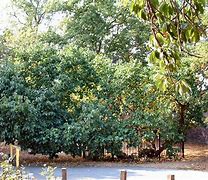Trees
Supporting staff and students to achieve their full potential since 1968.
Welcome to our weekly CENMAC blog post.
Trees | by Amorel Kennedy, CENMAC Administrator
Do you like trees? I love trees and one of the pleasures of CENMAC being based right next door to a park is being able to look out of the windows and see so many beautiful trees. As we approach the end of November most leaves have now dropped, but the changing colours from greens to different shades of red, orange, yellow and brown over this autumn have surely caught many people’s attention if they have been out and about.
Trees – like most things – are very complex structures. Whilst we might admire them, what we see on the outside is just that, the outside. A tree begins as a seed, which germinates and develops over time until a sapling has pushed up out of the ground and gradually grown into the trunk, branches, smaller twigs, leaves and flowers or fruit of the mature tree that we can appreciate. It will continue to evolve and change over the course of its lifetime with much of that change going on quietly inside the tree without anybody noticing.
So here is my tenuous link between trees and software…
Beneath the surface of every well-designed webpage that people access lies something far more complex based on the concept of the accessibility tree. The layers of design and programming that go into a webpage’s development will have followed the Web Content Accessibility Guidelines – a set of guidelines and best practice – that were put together by accessibility experts to address what “accessibility” means in a methodical way. They were organised around four principles:
- Perceivable: can users perceive the content? This helps keep in mind that just because something is perceivable in one sense, for example sight, it does not mean all users can perceive it.
- Operable: can users use UI components and navigate the content? For example, something that requires a hover interaction cannot be operated by someone who cannot use a mouse or touch screen.
- Understandable: can users understand the content and interface and is it consistent enough to avoid confusion?
- Robust: can the content be consumed by a wide variety of browsers? Does it work with assistive technology?
There is a short Q&A with a visually impaired program manager at Google about understanding users’ diversity here: Accessibility | Web Fundamentals | Google Developers
The structure of trees has helped form ideas that have helped technology be of ever-increasing value to all people and it seems that technology is returning the favour to help trees now. Here is a link to Dryad Networks which is using the ‘Internet of Trees’ to help prevent the devastation caused by wildfires. iottechnews.com/news
Back now to the physical world. National Tree Week (28 November to 6 December) is the UK’s largest annual tree celebration marking the start of the winter tree planting season which runs from November to March each year. It was first established by The Tree Council in 1975 to support the national replanting of trees after the outbreak of Dutch Elm disease which killed millions of elm trees and it has been full of tree planting and celebrating events ever since. Here are some links you might find interesting:

The structure of trees has helped form ideas that have helped technology be of ever-increasing value to all people.
Don’t forget you can share your CENMAC experiences for our CENMAC family to enjoy.
#AssistiveTechnology #Education #Mainstream #SEN #Homeschooling #CENMAC #Technology #Support #Solutions #25YearsDisabilityDiscriminationAct



